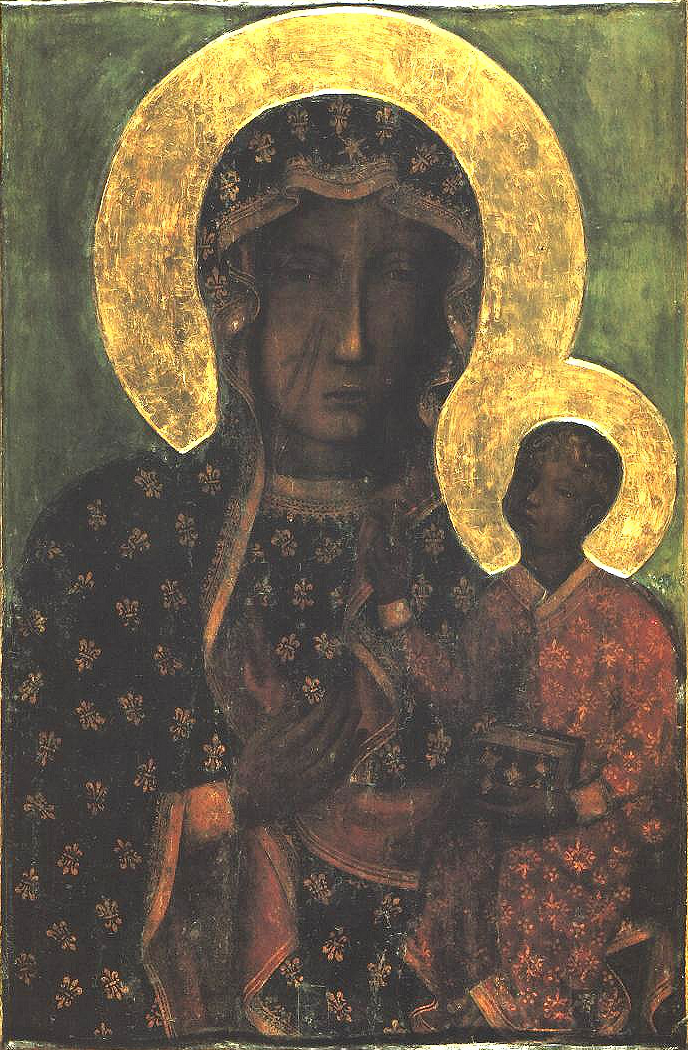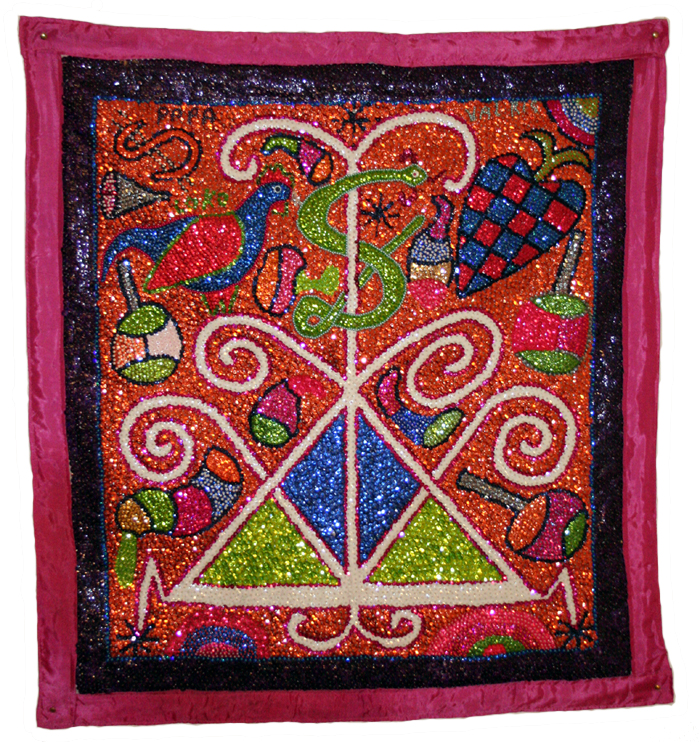|
Erzulie (song)
''Erzulie nennen O'', also known simply as ''Erzulie'', is a song composed at age 14 by the Haitian singer Auguste de Pradines, Kandjo (1879-1947), also known as Auguste de Pradines. ''Erzulie'' is often said to be one of his most beloved songs. Composed in the 1890s, the song continued to be played as "part of the Haitian folkloric repertory" at the end of the 20th century, more than 100 years after its composition. Origins ''Erzulie'' was composed in honor of Erzulie, Erzulie Freda, a well-known female Loa, lwa (Haitian Vodou, Vodou deity), in gratitude for healing.Richard Morse (2016). 'Pradines, Auguste Linstant de (“Kandjo” or “Candio”)' In: Print . The teenager Auguste de Pradines was in need of healing because at 9 years of age, while living in France with his father, the child Auguste had been diagnosed with Poliomyelitis, polio. His family followed physician recommendations and returned him to Haiti, where he was homeschooled. Five years later, at the age of 14, wh ... [...More Info...] [...Related Items...] OR: [Wikipedia] [Google] [Baidu] |
Auguste De Pradines
Auguste Linstant de Pradines, also known as August de Pradines, Ti Candio or Kandjo (10 September 1879 – October 1947) was an influential Haitian musician who largely created the archetype of the Haitian troubadour. Over nearly five decades, de Pradines composed love songs as well as songs of political and social commentary, traveling throughout Haiti to perform in clubs, at private parties, in theaters, and outdoor rallies. de Pradines had twelve children, including his daughter Emerante de Pradines Morse who also became a prominent Haitian musician, as did her son, Richard Auguste Morse, and another of Auguste de Pradines' grandsons, Michel Martelly, who also served as president of Haiti (2011-2016). Early & personal life Auguste Linstant de Pradines was born in Paris, France on 10 September 1879.Richard Morse (2016). 'Pradines, Auguste Linstant de (“Kandjo” or “Candio”)' In: Print . He was the son of prominent Haitian lawyer Linstant de Pradines. At 9 years of ... [...More Info...] [...Related Items...] OR: [Wikipedia] [Google] [Baidu] |
Erzulie
Erzulie (sometimes spelled Erzili or Èzili) is a family of loa, or spirits, in Haitian Vodou, Vodou. Overview The Erzulie is a family of loa that are often associated with water (fluidity), femininity, and feminine bodies. They are one of the only group of spirits directly tied to these characteristics and those who become possessed (through spirit possession) often are women or Masisi (Effeminacy, effeminate and or Homosexuality, homosexual men). Maîtresse Mambo Erzulie Fréda Dahomey ''Erzulie Fréda'' Dahomey, the Rada loa, Rada aspect of Erzulie, is the Haitian African spirit of love, beauty, jewelry, dancing, luxury, and flowers. She wears three wedding rings, one for each husband - Damballa, Agwe and Ogoun. Her symbol is a heart, her colors are pink, blue, white and gold, and her favorite sacrifices include jewelry, perfume, sweet cakes and liqueurs. Coquettish and very fond of beauty and finery, Erzulie Freda is femininity and compassion embodied, yet she also has a d ... [...More Info...] [...Related Items...] OR: [Wikipedia] [Google] [Baidu] |
Haitian Vodou
Haitian Vodou is an African diasporic religion that developed in Haiti between the 16th and 19th centuries. It arose through a process of syncretism between several traditional religions of West and Central Africa and Roman Catholicism. There is no central authority in control of the religion and much diversity exists among practitioners, who are known as Vodouists, Vodouisants, or Serviteurs. Vodou revolves around spirits known as '' lwa.'' Typically deriving their names and attributes from traditional West and Central African divinities, they are equated with Roman Catholic saints. The lwa divide up into different groups, the ''nanchon'' ("nations"), most notably the Rada and the Petwo. Various myths and stories are told about these lwa, which are regarded as subservient to a transcendent creator deity, Bondye. This theology has been labelled both monotheistic and polytheistic. An initiatory tradition, Vodouists usually meet to venerate the lwa in an ''ounfò'' (temple), run ... [...More Info...] [...Related Items...] OR: [Wikipedia] [Google] [Baidu] |
Poliomyelitis
Poliomyelitis, commonly shortened to polio, is an infectious disease caused by the poliovirus. Approximately 70% of cases are asymptomatic; mild symptoms which can occur include sore throat and fever; in a proportion of cases more severe symptoms develop such as headache, neck stiffness, and paresthesia. These symptoms usually pass within one or two weeks. A less common symptom is permanent paralysis, and possible death in extreme cases.. Years after recovery, post-polio syndrome may occur, with a slow development of muscle weakness similar to that which the person had during the initial infection. Polio occurs naturally only in humans. It is highly infectious, and is spread from person to person either through fecal-oral transmission (e.g. poor hygiene, or by ingestion of food or water contaminated by human feces), or via the oral-oral route. Those who are infected may spread the disease for up to six weeks even if no symptoms are present. The disease may be diagnosed by ... [...More Info...] [...Related Items...] OR: [Wikipedia] [Google] [Baidu] |
Plain Of The Cul-de-Sac
Plain of the Cul-de-Sac (french: Plaine du Cul-de-Sac, also known as the Cul-de-Sac Plain, or the Cul-de-Sac Depression) is a fertile lowland on the island of Hispaniola. It extends from southeastern Haiti into the southwestern Dominican Republic, where it is known as the ''Hoya de Enriquillo''. Geography Covering an area of 28 000 km² around with a length of 32 km long and 25 km wide, the Plain of the Cul-de-Sac is bounded to the north and south by high mountains and to the west by the Gulf of Gonâve on edges of which is the Haitian capital of Port-au-Prince and to the Plaine de l'Arcahaie that extends to the west. The Plain of the Cul-de-Sac extends eastward into the Dominican Republic. This valley was once an arm of the sea and upon withdrawal of the latter during the uprising Oligocene Miocene, salt water was trapped in the lowest points of depression resulting in two grand lakes; the Etang Saumâtre (also called "Lake Azuéi") in Haiti and Lake Enriquillo i ... [...More Info...] [...Related Items...] OR: [Wikipedia] [Google] [Baidu] |
Haitian Creole
Haitian Creole (; ht, kreyòl ayisyen, links=no, ; french: créole haïtien, links=no, ), commonly referred to as simply ''Creole'', or ''Kreyòl'' in the Creole language, is a French-based creole language spoken by 10–12million people worldwide, and is one of the two official languages of Haiti (the other being French), where it is the native language of a majority of the population. The language emerged from contact between French settlers and enslaved Africans during the Atlantic slave trade in the French colony of Saint-Domingue (now Haiti) in the 17th and 18th centuries. Although its vocabulary largely derives from 18th-century French, its grammar is that of a West African Volta-Congo language branch, particularly the Fongbe language and Igbo language. It also has influences from Spanish, English, Portuguese, Taino, and other West African languages. It is not mutually intelligible with standard French, and has its own distinctive grammar. Haitians are the largest com ... [...More Info...] [...Related Items...] OR: [Wikipedia] [Google] [Baidu] |
Emerante Morse
Emerante Morse, also known as Emerante de Pradines Morse (born Emerante de Pradines; 24 September 1918 – 4 January 2018) was a Haitian singer, dancer and folklorist, and the daughter of Haitian entertainer Auguste de Pradines (better known as Ti Candio or Kandjo).Richard Morse (2016). 'Pradines, Auguste Linstant de (“Kandjo” or “Candio”)' in ; This biographical article states that Emerante's father Candio was born in Paris, France, on 10 September 1879. Early life Emerante's mother, Amarante Jean Pierre, implored Our Lady of Mount Carmel, patroness of the Carmelite order, to give her a child, a baby girl, "promising that in return she would devote this child to the virgin saint." Emerante was born when her mother was "on vacation at Rivière Froid". Musical and dance career De Pradines went to Washington, D.C. in 1941 as a featured singer and dancer in a troupe led by Lina Mathon-Blanchet. After her return to Haiti, de Pradines performed in a regular concert serie ... [...More Info...] [...Related Items...] OR: [Wikipedia] [Google] [Baidu] |
Martha Jean-Claude
Martha Jean-Claude (21 March 1919 – 14 November 2001) was a Haitian writer, civil rights activist, entertainer, and composer. She was born in Port-au-Prince, Haiti and was well known internationally during her life and could perform in many languages. Her singing career began during the late 1930's and early 1940's. She incorporated Haitian folklore and Voodou lyrics into her performances. She spoke out against Haitian authorities who were exploiting the Haitian people. She was arrested in 1952 during the administration of President Paul Eugene Magloire after publishing her play "Anriette". Officials considered it to be directed toward and against the government at that time. When she was arrested she was pregnant but was released two days before giving birth. Jean-Claude was exiled to Cuba on 20 December 1952. She was married to Victor Mirabal, a Cuban journalist. Jean-Claude was well-known to the Hispanic communities who admired her talent and activism. She was featured in ... [...More Info...] [...Related Items...] OR: [Wikipedia] [Google] [Baidu] |
RAM (band)
RAM is a ''mizik rasin'' band based in the city of Port-au-Prince, Haiti. The band derives its name from the initials of its founder, songwriter, and lead male vocalist, Richard A. Morse. The band's music has been described by Morse as " Vodou rock 'n' roots", and has been one of the prominent bands in the ''mizik rasin'' musical movement in Haiti. RAM began performing together in 1990, and recorded their first album in 1996. The band's music incorporates traditional ''Vodou'' lyrics and instruments, such as ''rara'' horns and '' petro'' drums, into modern rock and roll. The band's songs include lyrics in Haitian Creole, French, and English. RAM is famous for its regular Thursday night performances at the Hotel Oloffson in downtown Port-au-Prince, attended by hotel guests and a wide spectrum of the country's political and racial groups. During the years of the military ''junta'' of Raoul Cédras, one of the band's singles, "Fèy", was banned nationwide by the military au ... [...More Info...] [...Related Items...] OR: [Wikipedia] [Google] [Baidu] |
1890s Songs
Year 189 (Roman numerals, CLXXXIX) was a common year starting on Wednesday (link will display the full calendar) of the Julian calendar. At the time, it was known as the Year of the Consulship of Silanus and Silanus (or, less frequently, year 942 ''Ab urbe condita''). The denomination 189 for this year has been used since the early medieval period, when the Anno Domini calendar era became the prevalent method in Europe for naming years. Events By place Roman Empire * Plague (possibly smallpox) kills as many as 2,000 people per day in Ancient Rome, Rome. Farmers are unable to harvest their crops, and food shortages bring riots in the city. China * Liu Bian succeeds Emperor Ling of Han, Emperor Ling, as Chinese emperor of the Han dynasty, Han Dynasty. * Dong Zhuo has Liu Bian deposed, and installs Emperor Xian of Han, Emperor Xian as emperor. * Two thousand Eunuch (court official), eunuchs in the palace are slaughtered in a violent purge in Luoyang, the capital of Han ... [...More Info...] [...Related Items...] OR: [Wikipedia] [Google] [Baidu] |



